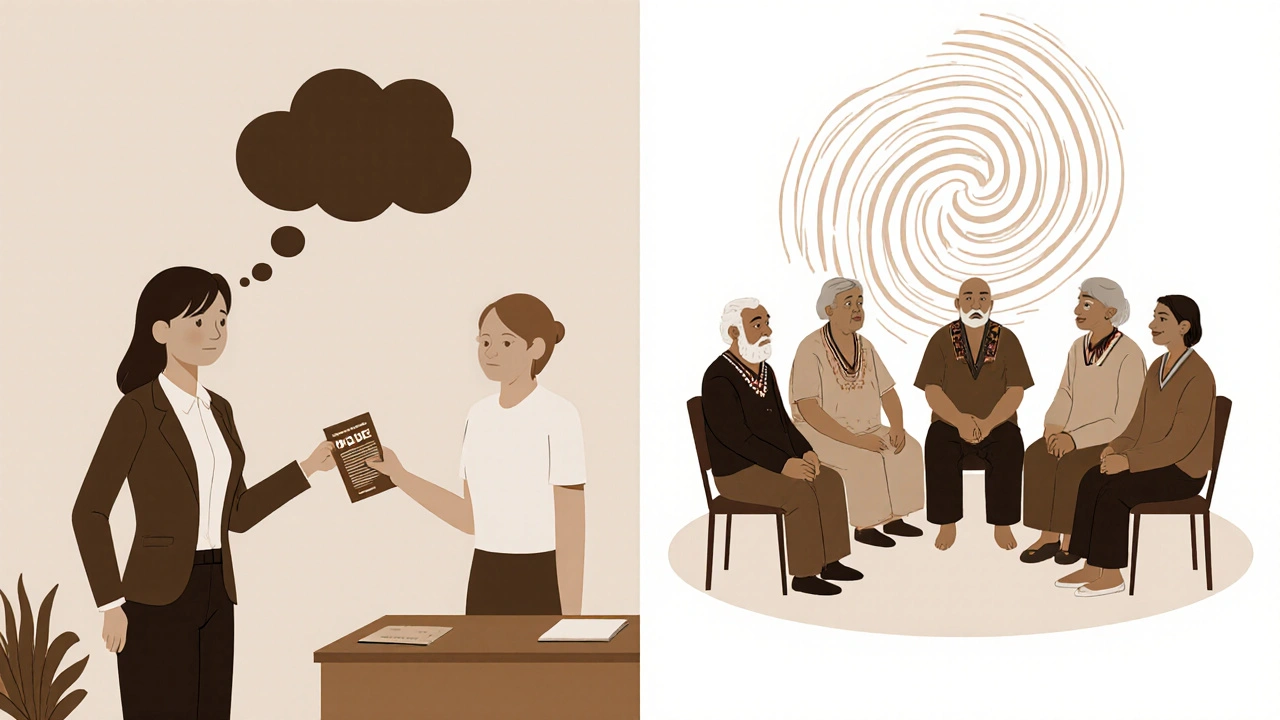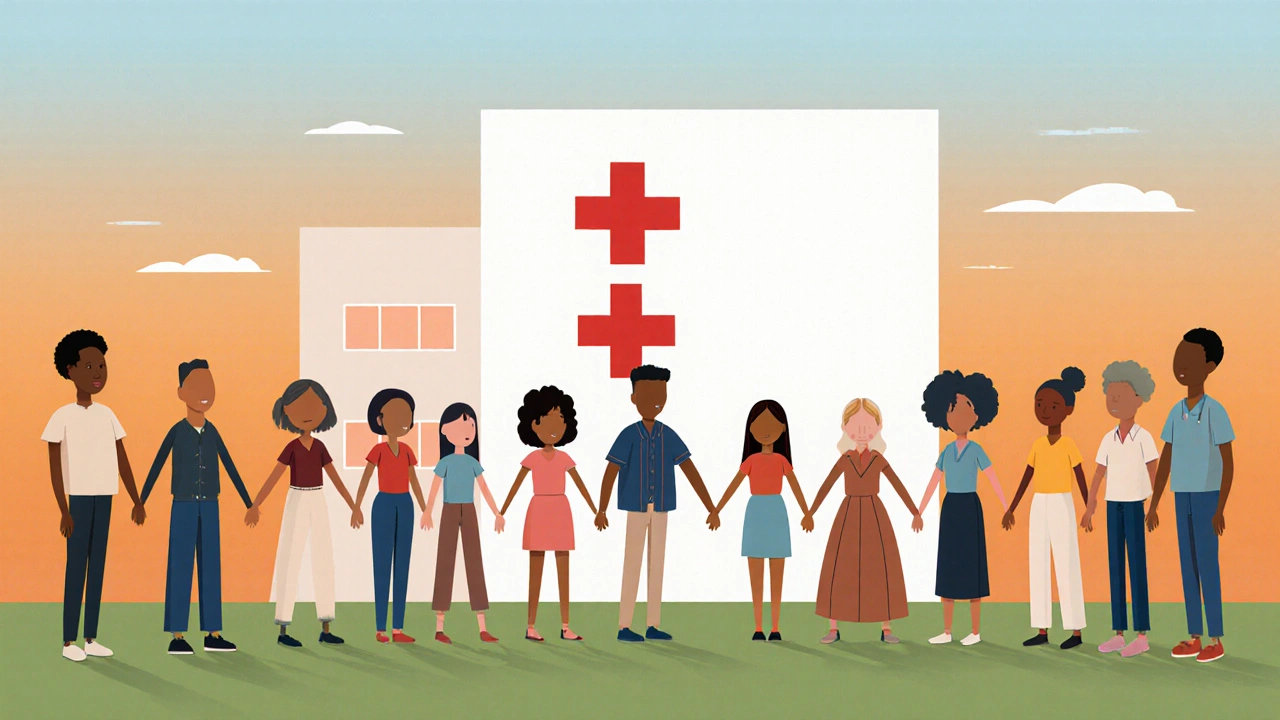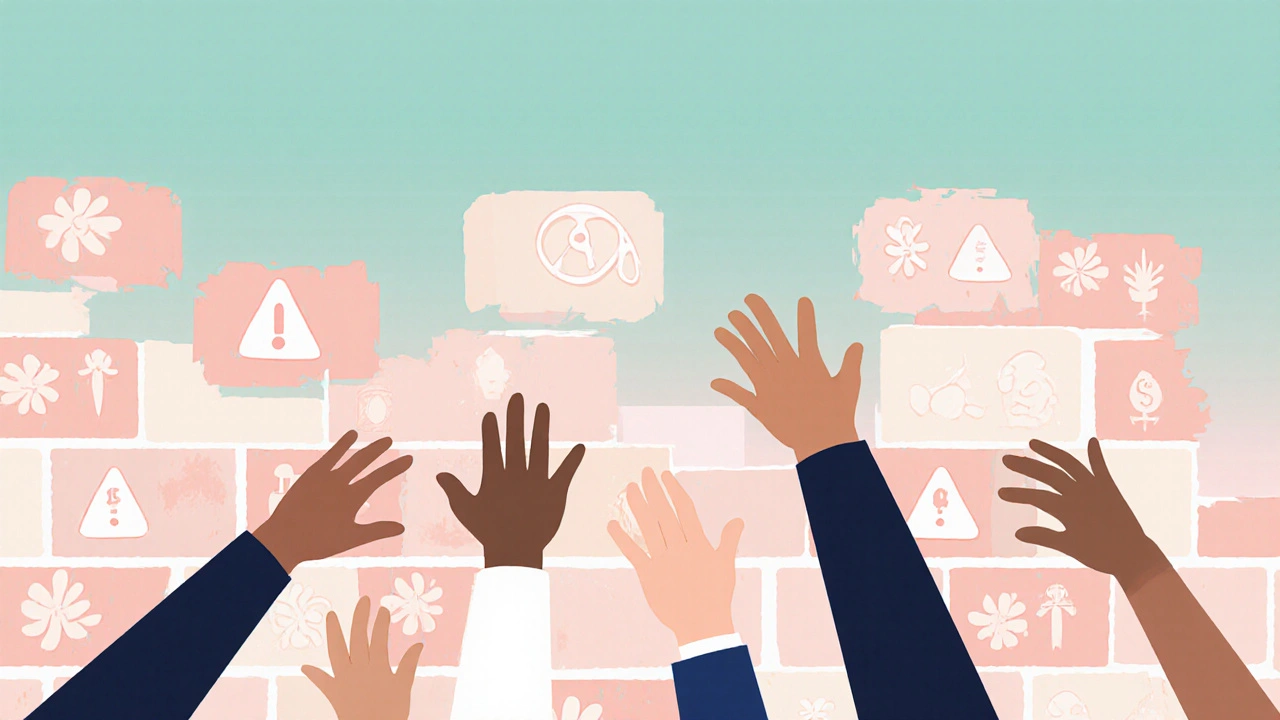HIV/AIDS Myth Buster Quiz
Test Your Knowledge
Check if you know the facts about HIV/AIDS. Select 'True' or 'False' for each statement.
Statement 1: "AIDS is a death sentence."
With modern antiretroviral therapy (ART), over 95% of people achieve viral suppression and can live a normal lifespan.
Statement 2: "Only gay men get HIV."
Anyone can contract HIV through unprotected sex, shared needles, or mother-to-child transmission.
Statement 3: "You can tell if someone has HIV by looking at them."
HIV has no visible signs; testing is the only way to know status.
Statement 4: "People with HIV should be isolated."
Effective treatment eliminates transmission risk, making isolation unnecessary.
Statement 5: "PrEP is only for 'high-risk' groups."
PrEP is a preventive tool recommended for anyone with potential exposure, regardless of identity.
When we talk about AIDS is a syndrome caused by the advanced stage of HIV infection, marked by severe immune system damage, the conversation often hits a wall of fear and judgment. That wall is what we call stigma - a set of negative attitudes that block empathy, hinder testing, and delay treatment.
Why the Stigma Still Exists
Even after four decades of scientific progress, myths keep feeding the fear. Many people still associate HIV/AIDS with moral failure, believing it’s a disease only linked to certain lifestyles. Media portrayals from the 80s and 90s cemented the idea of a "death sentence" and reinforced stereotypes. When misinformation meets cultural taboos, stigma becomes a self‑fulfilling prophecy.
Real‑World Impact of Stigma
Stigma isn’t just an emotional burden; it translates into concrete health outcomes. People who anticipate discrimination are less likely to get tested, and if they do test positive, they often postpone starting antiretroviral therapy (ART). Delayed treatment lowers the chances of viral suppression, increases the risk of opportunistic infections, and heightens transmission rates.
Research from the World Health Organization shows that in regions with high stigma, HIV testing rates can be up to 30 % lower than in supportive environments. The same pattern appears in New Zealand, where the New Zealand Ministry of Health reports that stigma remains a top barrier to early diagnosis, especially among Māori and Pacific peoples.
A Brief History: From Panic to Progress
In the early 1980s, AIDS was first identified in the United States. News headlines focused on panic, linking the disease to gay men, drug users, and hemophiliacs. The lack of accurate information allowed fear to spread faster than the virus itself. Over time, activism from groups like ACT UP forced governments and media to change their narrative, leading to funding for research and the development of lifesaving drugs.
Today, thanks to UNAIDS, global HIV infections have fallen by 40 % since the peak in 1997. However, the legacy of stigma lingers, especially in communities where cultural or religious beliefs clash with modern sexual health education.

Current Landscape: Numbers and Advances
According to the latest UNAIDS report (2024), about 38 million people live with HIV worldwide, and roughly 1.5 million new infections occur each year. In New Zealand, there were 1,100 new diagnoses in 2023, a modest decline from previous years but still notable among certain demographics.
Medical breakthroughs have turned AIDS from a fatal disease into a manageable chronic condition for many. Early initiation of ART can reduce the viral load to undetectable levels, effectively eliminating the risk of sexual transmission - the "U=U" (Undetectable = Untransmittable) principle. Preventive measures like Pre‑Exposure Prophylaxis (PrEP) further cut new infections, yet uptake is hampered when stigma discourages open conversations about sexual health.
Breaking Down Barriers: Practical Strategies
- Education at the source: Schools, workplaces, and community centres should provide fact‑based curricula that separate HIV biology from moral judgments. Interactive workshops featuring people living with HIV help humanise the disease.
- Media responsibility: Journalists and content creators need guidelines that avoid sensationalist language. Positive stories-like the success of New Zealand’s Pacific HIV outreach program-show the power of accurate reporting.
- Policy and law: Anti‑discrimination legislation protects people living with HIV in employment and housing. Enforcement, however, must be paired with public awareness campaigns so the law isn’t just on paper.
- Healthcare provider training: Clinicians should receive regular cultural competence modules. A non‑judgmental clinical environment encourages patients to disclose risk factors and adhere to ART.
- Community support groups: Peer‑led organisations like community support groups offer safe spaces for sharing experiences, reducing isolation, and spreading accurate information.
When these levers work together, the result is a ripple effect: less fear, more testing, earlier treatment, and ultimately fewer new infections.
Personal Stories: Voices That Matter
Emma, a 28‑year‑old from Wellington, tells us she delayed testing for three years because she feared being ostracised at her workplace. After joining a local support group, she started ART and now lives a normal, active life. Her story illustrates how a single supportive environment can turn the tide for an individual.
Similarly, Tane, a Māori elder, shares that the traditional belief that illness is a spiritual punishment kept his family from seeking care. A culturally adapted education program, co‑designed with iwi leaders, helped reframe HIV as a medical condition that can be managed, leading to a 25 % increase in testing among his community.

Checklist: What You Can Do Today
- Challenge myths: If you hear "AIDS is a death sentence," respond with current data about ART success rates.
- Use inclusive language: Replace "AIDS patients" with "people living with HIV/AIDS."
- Support confidential testing centers and encourage friends to use them.
- Advocate for workplace policies that protect HIV‑positive employees.
- Donate to or volunteer with community support groups that provide counseling and peer education.
Myths vs Facts Table
| Myth | Fact |
|---|---|
| AIDS is a death sentence. | With modern ART, over 95 % of people achieve viral suppression and can live a normal lifespan. |
| Only gay men get HIV. | Anyone can contract HIV through unprotected sex, shared needles, or mother‑to‑child transmission. |
| You can tell if someone has HIV by looking at them. | HIV has no visible signs; testing is the only way to know status. |
| People with HIV should be isolated. | Effective treatment eliminates transmission risk, making isolation unnecessary. |
| PrEP is only for "high‑risk" groups. | PrEP is a preventive tool recommended for anyone with potential exposure, regardless of identity. |
Frequently Asked Questions
Can someone with an undetectable viral load still transmit HIV?
No. The "U=U" principle is backed by multiple large studies; an undetectable viral load means the virus is not transmissible through sex.
How does stigma affect mental health?
Stigma can lead to anxiety, depression, and social withdrawal. These mental health challenges often worsen adherence to treatment, creating a harmful cycle.
What steps can workplaces take to support employees with HIV?
Implement confidential health benefits, ensure anti‑discrimination policies are visible, provide education sessions, and create a culture where privacy is respected.
Is PrEP safe for long‑term use?
Yes. Clinical trials show PrEP is well‑tolerated for many years. Regular kidney function monitoring is recommended but serious side effects are rare.
How can I talk about HIV without reinforcing stigma?
Use person‑first language, share facts, avoid sensationalist words, and focus on medical realities rather than moral judgments.
Breaking the chains of AIDS stigma isn’t a one‑time event-it’s an ongoing effort that blends education, empathy, policy, and personal courage. By shining a light on facts, listening to lived experiences, and standing up against discrimination, we can create a world where HIV is treated as the health issue it is-not a social taboo.

Ayla Stewart
October 18, 2025 AT 18:06